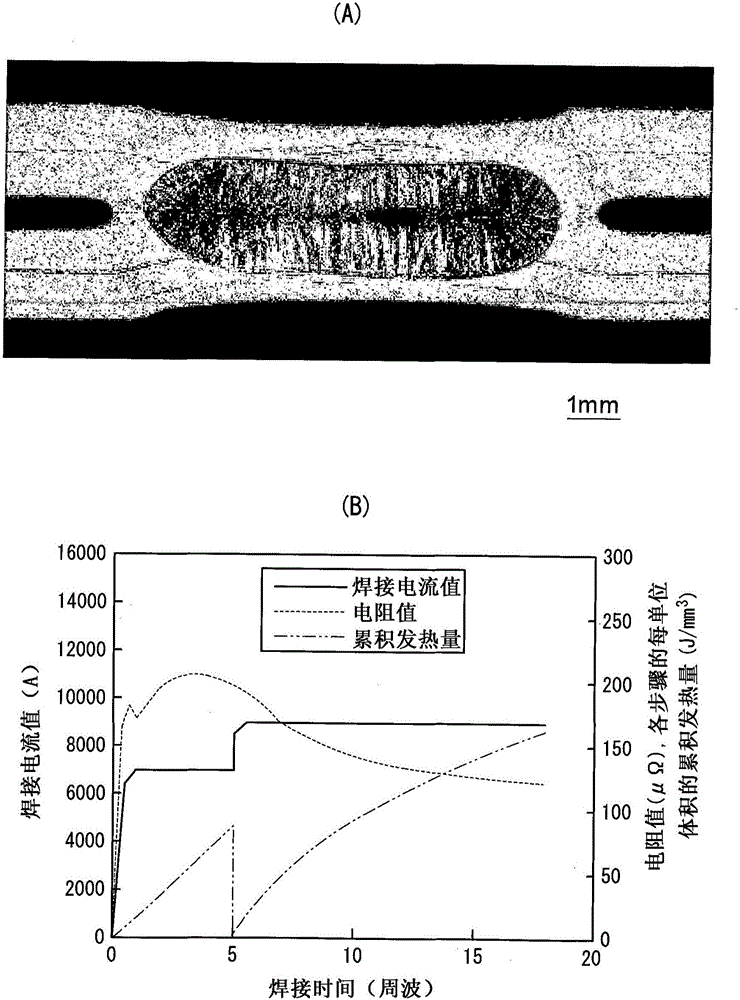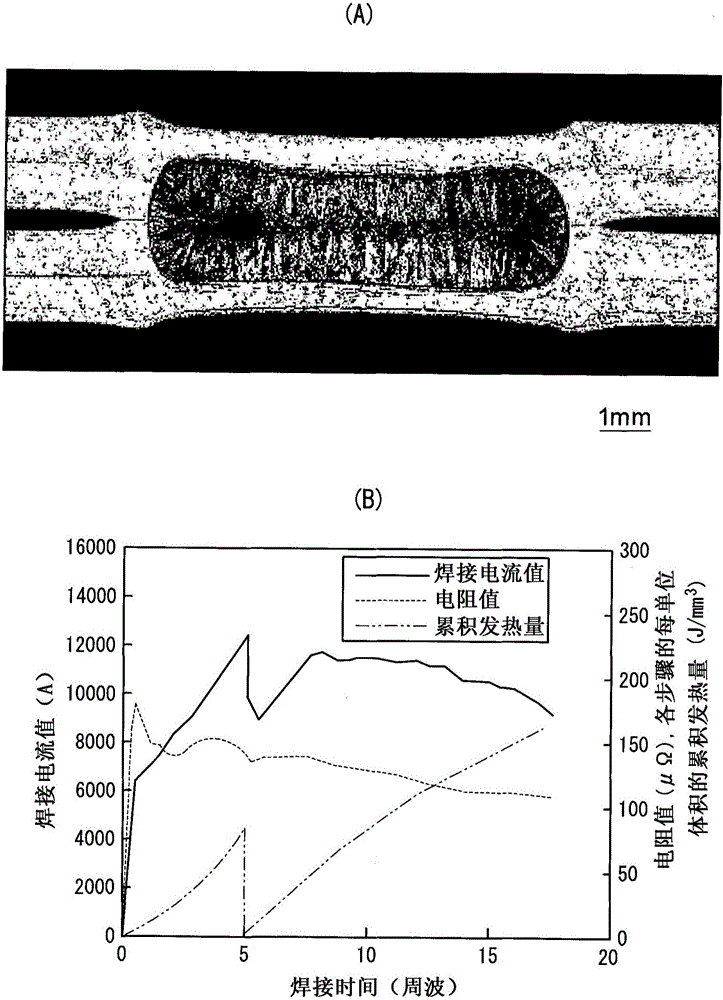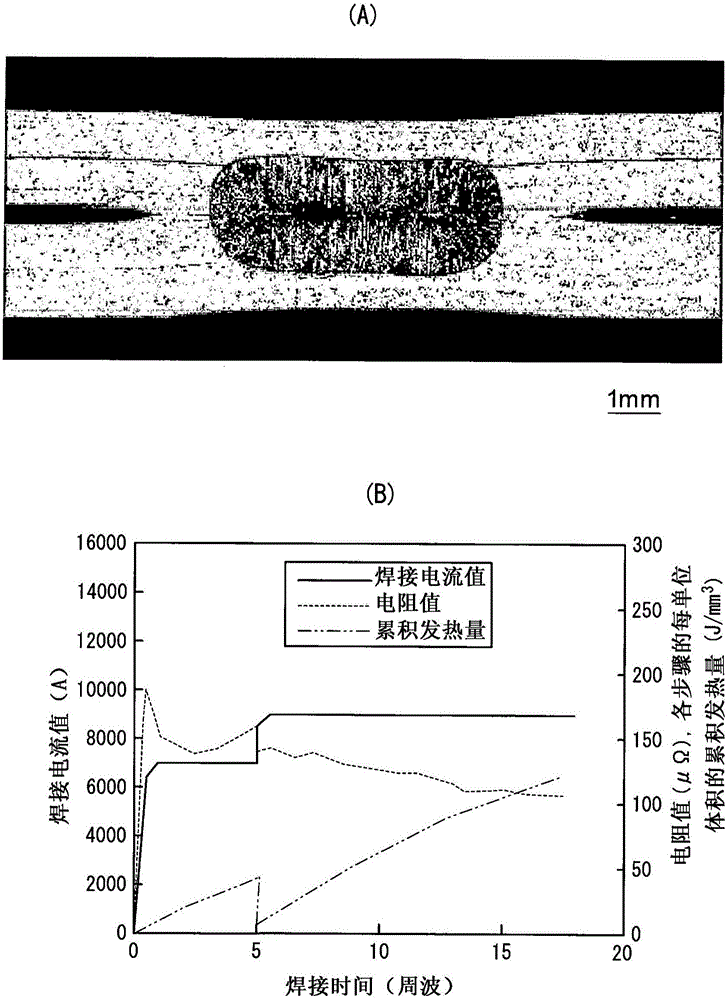Resistance spot welding method
A technology of resistance spot welding and electrode pairs, which is applied in the direction of resistance welding equipment, welding equipment, welding medium, etc., and can solve the problems of large influence of shunt, adaptive control not working, etc.
- Summary
- Abstract
- Description
- Claims
- Application Information
AI Technical Summary
Problems solved by technology
Method used
Image
Examples
Embodiment 1
[0087] A steel material (270 MPa) having a thickness of 1.6 mm was prepared as a workpiece to be welded. Furthermore, both the test welding and the actual welding are performed by dividing the energization mode into two stages.
[0088] In the above-mentioned method, two workpieces to be welded are overlapped, and preliminary welding is carried out by constant current control in a state where there is no gap and no flow to the welded point, and the welding conditions for obtaining an appropriate nugget diameter are obtained. The welding machine uses an inverter DC resistance spot welder, and the electrode uses a chrome-copper electrode with a DR-shaped front-end diameter of 6mm. As a result, the welding conditions of the test welding set the first stage as applied force: 3.5kN, welding current: 7.0kA, energization time: 5cyc, set the second stage as applied force: 3.5kN, welding current: 9.0kA, Power-on time: 13cyc. It should be noted that, in this specification, the energiz...
experiment example
[0103] Next, the plate group in which the two thin steel plates were superposed as shown in Table 1 was subjected to resistance spot welding under welding conditions to manufacture welded joints. It should be noted that test welding was performed under the conditions shown in Table 1 without welded spots. The actual welding was carried out under the conditions shown in Table 1. It should be noted that the "two-stage adaptive control" in the "control method of formal welding" in Table 1 is the method of formal welding described in the above-mentioned embodiment 1, the "constant current control" is the method described in the above-mentioned comparative example 1, and " "Level 1 Adaptive Control" is the actual welding method described in Comparative Example 2 above.
[0104] With regard to the obtained welded joint, the welded portion was cut, and the cross-section was etched, followed by observation with an optical microscope to measure the nugget diameter. will get (t: thi...
PUM
| Property | Measurement | Unit |
|---|---|---|
| Diameter | aaaaa | aaaaa |
| Diameter | aaaaa | aaaaa |
| Thickness | aaaaa | aaaaa |
Abstract
Description
Claims
Application Information
 Login to View More
Login to View More - R&D Engineer
- R&D Manager
- IP Professional
- Industry Leading Data Capabilities
- Powerful AI technology
- Patent DNA Extraction
Browse by: Latest US Patents, China's latest patents, Technical Efficacy Thesaurus, Application Domain, Technology Topic, Popular Technical Reports.
© 2024 PatSnap. All rights reserved.Legal|Privacy policy|Modern Slavery Act Transparency Statement|Sitemap|About US| Contact US: help@patsnap.com










